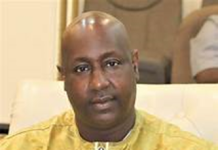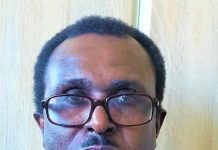By Makutu Manneh & Amadou Manjang
Leaders of the Organization for the Development of The Gambia River Basin (OMVG) have signed three new Conventions at the end of their summit held in Banjul on Saturday, 7th December.
The leaders of Senegal, Guinea, Guinea-Bissau and The Gambia signed the Convention on the legal status of the Kayanga/Geba Rivers, the Convention on the legal status of the Koliba/Corubal Rivers and the Convention on the terms and conditions for financing OMVG common works. The occasion was the 11th Ordinary Session of the OMVG Heads of State and Government hosted by The Gambia.
The leaders noted the completion of the works in all OMVG member states of the 1677 kilometres long electrical connection line with a capacity of 800 megawatts, equipped with optical fibres for the development of telecommunication and two dispatching centres, one in Guinea and the other in Senegal.
The leaders also took note of the preparation of the Saltinho Hydropower Plant on the Corubal River in Guinea-Bissau to be financed by the African Development Bank. The process of recruitment of consultants for the studies on four sites has commenced, according to the communique.
It is noted in the communique that the Integrated Water Resource Management Project for the Koliba/Corubal Rivers financed by the Global Environment Facility is now operational. Its aim is to ensure the integrated and sustainable management of water and natural resources in the river basin through enhanced cross-border cooperation and governance.
Incoming Chairperson, President Umaro Sissoco Embalo, urged the OMVG high commission to ensure that the agency for the management of the Samba Ngalou Dam and the power transmission network (SOGESART) become operational in the first half of 2025.
The summit also witnessed The Gambia handing over the chairpersonship of The Gambia River Basin Development Organisation (OMVG) to the Republic of Guinea-Bissau.
Created in 1978 and pioneered by Gambia’s late first President Sir Dawda Kairaba Jawara and the late Senegalese President Leopold Sedat Senghore, the two countries signed an agreement on 11th of June 1976, with the objective of sharing their common resources from the energy sector through the River Gambia. The two leaders later included Guinea Conakry and Bissau.
Since its establishment, the organisation initiated the development of hydropower plants like Sambangalou and Kaléta Dams, and the interconnection of power grids to enhance energy access across member states.
It objectives are to harmonise exploitation of the common resources of basins of Rivers Gambia, Kayanga-Géba and Koliba-Corubal; reduce the vulnerability of the economies of OMVG Member States to climate-related hazards and accelerate the economic development of Member States.
It also aims to maintain the ecosystem balance in the sub-region and, more particularly, in the Basins and secure and improve the incomes of populations of the Basins
For the next two years, the Republic of Guinea-Bissau will chair the conference of heads of states and governments while the Republic of Guinea, chairs the Council of Ministers meetings. The Republic of The Gambia will hold the position of OMVG High Commissioner.
Since their meeting in Addis Ababa, Ethiopia, on 29th January 2016, this is the first time the heads of states and governments of OMVG have converged. Outgoing Chairperson, President Barrow highlighted that despite their achievements, the higher organs of their Organisation do not meet regularly, and said such can hinder operations.
Those in attendance were Ousman Sonko, the Prime Minister of the Republic of Senegal and Rui Duarte Barros, the Prime Minister of the Republic of Guinea-Bissau and Amadou Oury Bah, the Prime Minister of the Republic of Guinea Conakry.
Membership arears are quite high amounting to just under 20 billion CFA francs. Both incoming and outgoing chairpersons have urged member states to settle their arears.


















